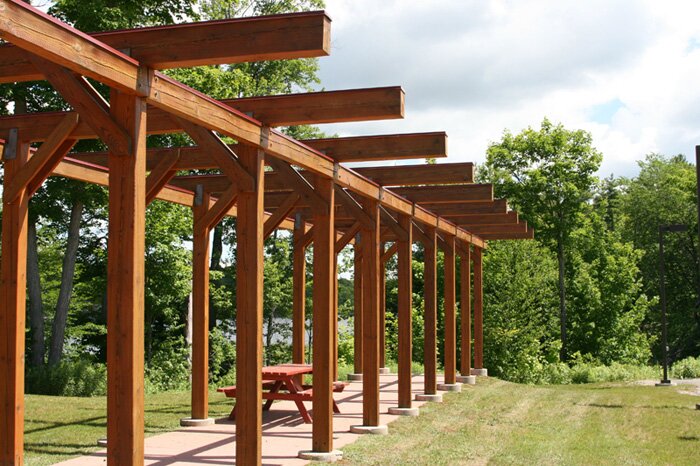About
About National Aboriginal Network for Arts Administration
The vision for the National Aboriginal Network for Arts Administration (NANAA) is a multidisciplinary, national collective composed of Aboriginal, Métis and Inuit arts leaders, managers and administrators who live in all regions of the country. Those currently associated with NANAA work to support the traditional and contemporary artistic and cultural practices of Aboriginal artists in an administrative, managerial and leadership capacity. The current focus of the network’s volunteer National Working Committee is an annual national gathering, which is planned and delivered in partnership with communities.
Vision: A healthy and sustainable Aboriginal arts community.
Guiding Principals: To support the traditional and contemporary artistic and cultural practices of Aboriginal artists in an administrative, managerial and leadership capacity.
The National Aboriginal Network for Arts Administration is a multidisciplinary national arts organization with extensive regional and tribal representation. It partners with communities in the organization of national gatherings at a community level which:
• boost community spirit by being a catalyst for change and by offering opportunities for emerging and established organizations;
• build stronger communities;
• raise awareness in the community of the importance of the arts;
• value the connection between spirituality and the arts;
• provide an economic boost for the hosting community;
• promote intercultural sharing (Aboriginal, French, English);
• support traditional and contemporary Aboriginal art forms.
The National Committee of NANAA is a group composed of Aboriginal arts administrators and artists committed to facilitate the organization of an annual gathering of Aboriginal arts administrators. Some members of the committee represent an Aboriginal arts organization, some work for a funding body and some are independent arts administrators and consultants. Over the past seven years, the process of appointments to the committee has been organic and flexible.
Each year a representative of the hosting community joins the National Committee. Currently, the national committee is composed of: Cathi Charles Wherry, Saanichton, BC, Ryan Cunnigham, Edmonton, Alberta, Keith Dawson, Cap Breton, NS, Kathy Legge, Halifax, NS, Germaine Mesténapéo, Uashat, Quebec, France Trépanier, Sidney, BC and Cynthia Lickers-Sage, Toronto, Ontario, (2010 Host Contact).
Le Réseau national autochtone pour l’Administration des Arts (RNAAA)
Le Réseau national autochtone pour l’Administration des Arts est un collectif multidisciplinaire composé de leaders, de gestionnaires et d’administrateurs des Premières Nations, Métis et Inuits qui vivent dans toutes les régions du pays. Ceux associés aux travaux du RNAAA ont pour objectif de soutenir les pratiques traditionnelles et contemporaines artistiques et culturelles des artistes autochtones dans une fonction administrative, de gestion et de leadership. L’objectif actuel du Comité de travail national est la tenue d’un rassemblement national annuel, qui est planifié et exécuté en partenariat avec les communautés. RNAAA est dans une phase cruciale de son développement.
Vision: Une communauté artistique autochtone saine et viable.
Principes directeurs: Soutenir les pratiques artistiques et culturelles traditionnelles et contemporaines des artistes autochtones, sur les plans administratif, de la gestion et de la capacité de leadership.
Le Réseau national autochtone pour l’Administration des Arts est un organisme artistique national multidisciplinaire qui possède une importante représentation régionale et tribale. Il établit des partenariats avec des communautés pour l’organisation de rassemblements annuels tenus au sein des communautés et qui :
• stimulent l’esprit de la communauté en étant un catalyseur de changement et en offrant des opportunités aux organismes établis et de la relève;
• construisent des communautés plus fortes;
• accroissent la connaissance de l’importance des arts dans les communautés;
• mettent en valeur la relation entre la spiritualité et les arts;
• fournissent un stimulant économique à la communauté d’accueil;
• font la promotion du partage interculturel (Autochtone, Français et Anglais);
• soutiennent les formes d’art autochtones traditionnelles et contemporaines.
Le comité national du RNAAA est un groupe composé d’administrateurs d’art et d’artistes autochtones engagés à faciliter l’organisation un rassemblement annuel d’administrateurs d’art autochtones. Certains membres du comité national représentent un organisme artistique autochtone, certains travaillent au sein d’organismes bailleurs de fonds et d’autres encore sont des administrateurs d’art et consultants autochtones indépendants. Au cours des sept dernières années, le processus de nomination des membres du comité national fut organique et flexible.
Chaque année, un représentant de la communauté d’accueil se joint au comité national. Présentement, le comité national est composé de Cathi Charles Wherry, Saanichton, C.-B., Ryan Cunningham, Edmonton, Alberta, Kathy Legge, Halifax, N-É, Keith Dawson, Cap Breton, N.-É., Germaine Mesténapéo, Uashat, Québec, France Trépanier, Sidney, C.-B. et Cynthia Lickers-Sage, Toronto, Ontario (Contact de l’hôte 2010).
About Wahta (host location)
Wahta Mohawks was established in 1881, when a group of Protestant Mohawks moved from their original home in Oka, Quebec due to religious, civil and economic differences. An agreement was reached with Catholic Priests whereby the Protestant group of the Oka community would move to the Muskoka district in the spring of 1882; the people instead chose to move in the fall of 1881 and arrived in October just in time for winter.
Life was tough. Subsistence farming, trapping and work in the logging camps were a way of life. Many have had to move from the community for economic reasons but still consider Wahta home. Recently Wahta Mohawks completed a history book that outlines a complete historical narration from the elders themselves.
